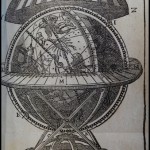 When we stop to listen, poetry is all around us: in the rhythms that we walk, in the music that we listen to, in the natural world we experience. Fortunately, National Poetry Month gives us space to make this a curricular focus.
When we stop to listen, poetry is all around us: in the rhythms that we walk, in the music that we listen to, in the natural world we experience. Fortunately, National Poetry Month gives us space to make this a curricular focus.Explore video and audio recordings with renowned poets
 When we stop to listen, poetry is all around us: in the rhythms that we walk, in the music that we listen to, in the natural world we experience. Fortunately, National Poetry Month gives us space to make this a curricular focus.
When we stop to listen, poetry is all around us: in the rhythms that we walk, in the music that we listen to, in the natural world we experience. Fortunately, National Poetry Month gives us space to make this a curricular focus.
 Recently I've been watching and listening to elementary school students as they engage with nonfiction. The range of topics that excite them is extraordinary and their conversations about their reading remind me how powerful a stimulus books can be to exploration and critical thinking.
Recently I've been watching and listening to elementary school students as they engage with nonfiction. The range of topics that excite them is extraordinary and their conversations about their reading remind me how powerful a stimulus books can be to exploration and critical thinking.
 At TeachingBooks.net we believe that books belong in every K—12 classroom and strive to support reading experiences by offering multimedia resources to enliven and expand on meaningful conversations about books in the curriculum.
At TeachingBooks.net we believe that books belong in every K—12 classroom and strive to support reading experiences by offering multimedia resources to enliven and expand on meaningful conversations about books in the curriculum.
 While young children explore language through the rhythm and rhyme of song, music is one of the important bonds tweens and teens share with their peer group. But no matter what age your students are, it's likely they respond to music, providing you with an enjoyable way to connect with them.
While young children explore language through the rhythm and rhyme of song, music is one of the important bonds tweens and teens share with their peer group. But no matter what age your students are, it's likely they respond to music, providing you with an enjoyable way to connect with them. Elementary students love series titles. They enjoy the comfort of familiar characters, settings, and structures. This is especially true for emergent and newly independent readers, whose reading success with these titles encourages them to seek similar books. (Me personally, I learned to read thanks to Matt Christopher’s sports books.)
Elementary students love series titles. They enjoy the comfort of familiar characters, settings, and structures. This is especially true for emergent and newly independent readers, whose reading success with these titles encourages them to seek similar books. (Me personally, I learned to read thanks to Matt Christopher’s sports books.)